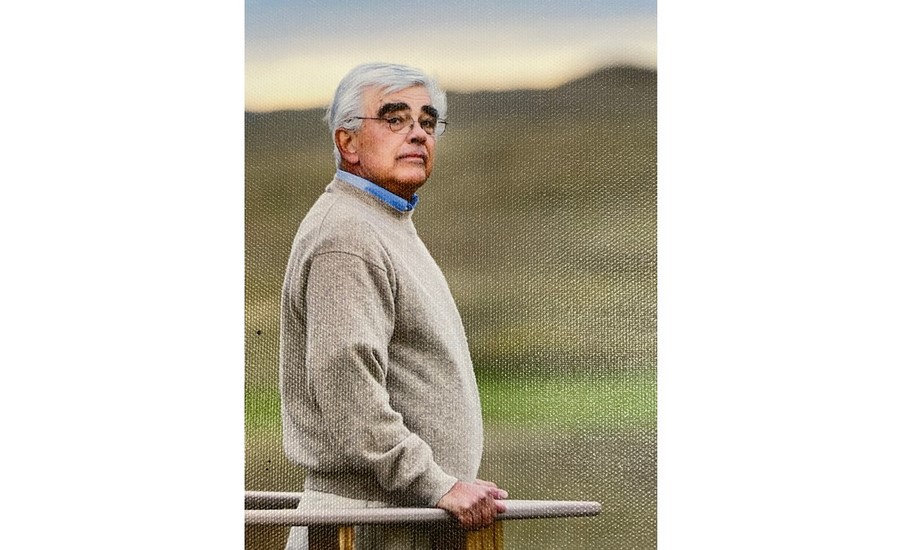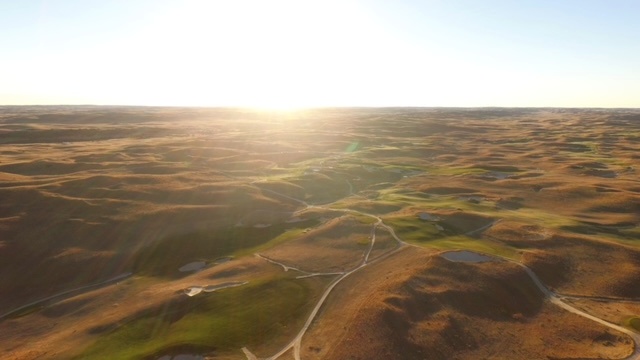Estimated reading time: 8 minutes
The pecking order for the upper echelon of golf courses in the world usually involves a straightforward game plan; enhanced visibility facilitated through the hosting of major golf competitions begets credibility and indelible memories seared into the collective memory of golfers worldwide.
Among the most noted of golf venues are the distinguished trio of Augusta National in Georgia, Pebble Beach along the California coast and the most acclaimed of all — the Old Course at St. Andrews with its inexorable ties to golf’s origins in Scotland.
The annual Masters tournament provides the launching pad each spring for Augusta National. The holes embedded into the consciousness of golfers globally and the awarding of the green jacket only reinforces the connection to its chief founder Bobby Jones and co-designer the illustrious Dr. Alister MacKenzie. Even with recent course tinkering the original premise Jones and MacKenzie envisioned continues onward.
Pebble Beach provides that glorious intersection of land and water. The layout touched by various hands over the years and brought to the forefront through the hosting of the annual Bing Crosby clambake for many years and now the AT&T PGA Tour stop. Incredibly, the layout did not host its first U.S. Open till 1972 — but is sealed in the memory banks courtesy of a magnificent 1-iron hit by Jack Nicklaus at the penultimate hole during the final round. Other Opens followed with Tom Watson winning via a chip-in at the same hole in 1982. Eighteen years later, Tiger Woods elevated Pebble Beach’s stature even more with an emphatic 15-strole win at the 2000 event.

The Old Course at St. Andrews pays homage to the game’s earliest roots in Scotland. Each year the staging of the Dunhill Cup presents this timeless links. Yet it has been periodic hostings of The Open Championship that have placed the Old Course on an unsurpassed level. Who can forget the epic 18th hole birdie by Seve Ballesteros in 1984 and the final walk up that same hole by Jack Nicklaus in 2005. This July. the 150th Open will be rightly hosted by this grand dame.
However, the route to the top of the golfing pyramid can mean a far different pathway for others. Interestingly, the creation of Sand Hills was one where the outcome was far from certain but came into fruition through the combined talents and tenacity of all the key principals.
It’s been said great land often provides the essential launching pad for the creation of the most profound and enduring courses. The Sand Hills region of western Nebraska occupies a swath of land roughly 60 miles from north-to-south and 150 miles across from west-to-east for a sum total of 20,000 square miles. Massive dunes formed when the glacial period in earth’s history receded providing a possible golf location without peer.
Creating such a presence had to deal with certain logistical issues. For starters the isolation of the facility with Denver and Omaha the two closest large cities and requiring no less than four hours by car.
The most pressing question emerged — could an isolated stand-alone club — combined with an abbreviated golf season of roughly six months — achieve success?
Dick Youngscap had such a vision. In concert with other investors, he believed such a project could not only prove successful but provide the rebirth of a style of architecture that truly connects player and course. Yet, for that to happen, the next crucial question arose. Who to hire to design such a course?

The tandem of former PGA Tour superstar Ben Crenshaw and his partner Bill Coore entered the picture.
The duo’s claim to fame was incorporating classical architectural themes from golf’s heyday in the 1920s. Elevating the land and its natural features to be the star player in the final outcome. A less is more approach being the central theme. The difficult task that befell Coore and Crenshaw was how to successfully route a course given the magical nature of the ubiquitous sand dunes. Amazingly, the duo had to whittle down potential holes from 130 to a final 18. No small feat given the majesty of the property.
The talented twosome created an engrossing design which opened in June 1995. Now, just over 25 years old the reputation of Sand Hills has grown to heights unimagined. The passing of time has reinforced its overwhelming contribution to the sport. This has spurred others to trek there. A golf pilgrimage — akin to practicing Muslims faithfully heading to Mecca at least once in a lifetime.

For many the journey to Sand Hills will come via Interstate 80 and its exit at North Platte. The road to the course is an empty stretch of prairie land with sand dunes stretching to the horizon. One’s anticipation grows exponentially — equivalent to a toddler on Christmas morning.
Upon stepping onto the 1st tee the euphoria of the moment takes center stage. The sheer vastness produces a surreal moment. No distractions — no mindless clutter. Just you — the land – and your golf clubs.
The par-71 7073-yard layout magically conveys and creates the clear impression of having always been there. The central theme — Sand Hills breathes authenticity. Each shot followed by each hole implants a deeper connection to what lies within the soul of the game.
Most notably, the golf is not cheapened through the ignorant magnification in saluting a “signature hole.” Sand Hills — in its entirety — is a signature moment.
Emotions are part and parcel when at Sand Hills. Where so many other golf facilities believe they must add “extras” to keep those engaged — at Sand Hills the joy in simply being there carries the day.
The role of Mother Nature is also a central factor. Weather patterns can quickly change and the force of the wind — in varying directions and velocities — can insert itself with maddening results. Golfers, as opposed to those who simply play golf, relish the challenge.

During the last week of May, the American Society of Golf Course Architects (ASGCA) organized a golf course architectural education event. A total of 33 architects visited Sand Hills to learn from playing the course and listening to the creative and visionary team on hand for the gathering. Among those present were owner Dick Youngscap and the design team of Coore and Crenshaw, along with one of the shapers that brought that vision to life — Dave Axland.
For some of the architects it was their first time at Sand Hills. Others had visited the club on prior occasions. The architects’ comments were all laudatory – a meaningful validation from those who create other courses. In addition to the stunning course itself, many commented on the magnitude of what Sand Hills has brought to bear. More than a dozen copycats in a new genre of course – the remote destination course distinguished by the golf course architecture itself — rather than other resort amenities.
The arrival of Sand Hills marked a new renaissance in what golf design can and should be. But make no mistake about it — the original effort commands the highest rung with no peer equaling it since Sand Hills opened.
During a question-and-answer session, Youngscap was asked if plans to create a second 18-hole course are being contemplated? His answer was succinct — “No.” Creating a second 18 would be the equivalent of adding another singer after one has already heard from Frank Sinatra.
Modern golf design was fundamentally advanced when Sand Hills entered the scene. Resurrecting classical architecture back to the forefront with Coore and Crenshaw brilliantly fitting the holes into a setting that engulfs one’s body and mind.
Coore pointed out “they just tried to fit holes to the land.” The approach seems more mystical than scientific — an inner conviction guiding the duo when making the final determinations.

As you come to the 18th hole — you are struck by the inclusion of a western windmill in the nearby distance that provides a fitting touch to the day. Crenshaw stated the 1st and 18th holes were “always in the picture” with the other chosen holes added.
Sand Hills. The simplicity of the name belies the total immersion that awaits those fortunate souls who play there. What you knew “before” about golf courses and can fully embrace “after” playing there is a game changer of epic proportions.
The passing of time clearly provides perspective on the impact of any golf course. The fanfare of Sand Hills has grown only more pronounced. To paraphrase George Mallory on why he decided to scale Mount Everest — his answer was ever direct — “because it’s there.“
The same can be said for those who make the journey to Nebraska.
Sand Hills is now rightly ensconced among the world’s top ten courses. The quintessential intersection of land, owner and architect.
Bravo.
